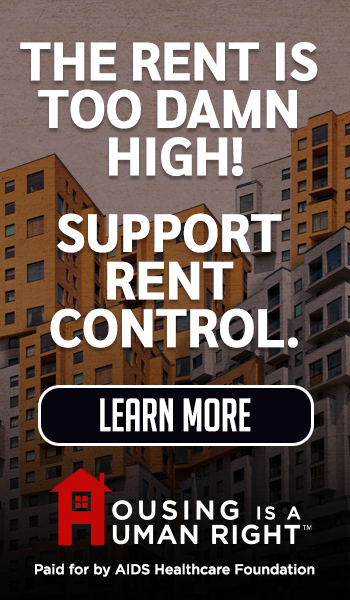Comments
iAUDIT! - One of the most controversial subjects concerning homelessness is the idea that some unhoused people are “service resistant”. Although there is no standard definition of service resistance, it generally applies to people who refuse offers of shelter or housing and prefer to stay on the streets. Advocates insist service resistance is a myth and have several surveys of the unhoused to back it up; most homeless people would accept shelter if it were clean, safe, and included a sense of privacy such as a sleeping area with a lock on the door. Critics can cite their own studies that show as much as 60 percent of unhoused people will not accept shelter or housing if it means living by rules and impinges on their ability to use drugs or alcohol. They refer to surveys that show more than half of the unhoused have serious mental illnesses or chronic substance abuse problems, rendering them unable to make an informed decision to accept shelter.
The reality of service resistance has important policy implications. Proponents of aggressive encampment clearances say a coercive element is necessary to encourage service resistant people to move into shelters. Homeless advocates insist more resources need to be invested in assuring the unhoused that shelters are safe, clean, and private, and practice policies respecting their autonomy. Their policies are based on building relationships through outreach. A manager with one of the city’s providers said it can take as many as 50 encounters to get some people to agree to shelter. Like many public policy issues, there is truth to both viewpoints. As I’ve written before, there are as many reasons people become homeless as there are homeless people. No single policy can applies to everyone.
First, let’s consider the evidence for and against the idea of service resistance. A recent meta-study, (a study of many other studies) by the Homelessness Committee of the League of Women Voters of Greater LA calls service resistance a myth, based on studies by UCLA. Similarly, a 2019 NYU study says people who refuse offers of shelter do so because they believe shelters are unsafe, offer little help, and impose unreasonable restrictions. Indeed, a common thread running through most of the reports opposing the idea of service resistance say the label is used to scapegoat unhoused people with legitimate concerns about their safety and the security of their personal property.
On the other side of the argument, the City of San Francisco recently reported 75 percent of persons approached in encampments refused offers of shelters. What makes the refusal rate significant is that it is occurring in the middle of new Mayor Daniel Laurie’s more aggressive campaign to clear encampments. Even as unsheltered homelessness is declining, the percentage of engagements that end in service refusal is climbing. As a report on the City’s efforts says, “This means the rising ratio of refusals to engagements amid a declining street homeless population suggests a growing portion of the city’s remaining homeless are so-called service-resistant individuals”.
In October 2024, Devon Kurtz, a social researcher and director of public safety policy at the conservative Cicero Institute, wrote that service resistance is real, writing “From obstinance towards authority to habitual fondness for camping, to substance abuse or having pets, chronically unsheltered homeless people sometimes refuse available shelter for a variety of reasons”. Whatever their reasons may be, Kurtz wrote, those reasons do not override a community’s interest in public health and safety when it orders an encampment to be cleared.
Central to the debate about service resistance is the concept of what a shelter is and how it should perform. Writing in Calmatters in March 2025, advocate and formerly unhoused person P. W. Robinson described his shelter experience as literally lifesaving, putting him on the path to stable housing for the first time in years. About properly run shelters, he wrote, “In any decent shelter, a person is treated like a human being, often for the first time in many years. They suddenly have the dignity of running water, toilets, showers, food, mail, etc. If ever they might dare to hope again, that’s the time”. He also noted some clients are easily defined as “service resistant” when in fact they are suffering from current or past trauma, or mental health or addiction problems, serious issues most general shelters are not designed to handle.
What both sides of the service resistance debate seem to agree on is that shelters should be a key step in the streets to housing journey. They should provide a safe environment, and individualized case management so each client receives the services he or she needs; these services should be coordinated by a dedicated case manager who is physically present in the shelter at defined times. People with serious mental illness and/or substance abuse problems should be referred to more structured facilities. As they were for Mr. Robinson, shelters should be gateways to permanent housing.
Unfortunately, few shelters live up to Mr. Robinson’s experience. Investigative reporter Lauren Helper, writing for Calmatters in February 2025, found shelters throughout California suffer from a myriad of problems, including violence (committed by clients and staff), death rates higher than jails, contracts granted to providers dogged by scandals like fraud and sexual assault committed by shelter staff, lack of local and state oversight, and housing placement rates far below 20 percent.
Locally, homeless shelters in LA are notorious for being poorly managed. As described in a court-ordered independent assessment, shelters provide few or no client services. Auditors found one provider was supplying only two meals per day while charging for three. As I wrote last year, the City loses its moral authority to move people into shelters if they are no better than life on the streets. Part of the problem is that state and federal policies require “no barrier” entry policies, meaning people with active substance abuse problems and mental health crisis must be admitted. As described in an article in The Hill, housing active drug users with people trying to recover from addiction undermines sobriety efforts and often results in people leaving shelters for the streets; the recovering person to get away from close-up drug use, and the active user ejected for behavioral problems.
Another major problem is that like most of Los Angeles’ homelessness system, shelter operations are part of dysfunctional structure where authority is split between the City, County, and LAHSA, and none of the three shows much interest in the quality of shelter management. The court-ordered assessment and an audit from LA County Controller found contract oversight of providers is almost nonexistent, with payments being made to contractors with no documentation, payments to vendors with expired (or no) contracts, and a lack of data verification.
What does all this mean in terms of how we address service resistant people? First, without fundamental structural reforms in the system, cities cannot expect people to accept offers of shelter. Reforms must include accountability for basic human services like meals and showers, plus performance-based metrics on support services. Providers should not be paid merely for “engagements”, but for what results from those engagements. Not all unhoused people need government-provided housing, and they should not be forced to languish in shelters waiting for it. Some just need a stable place to regain balance in their lives so they reenter mainstream society. Others need more structured care than the mere provision of a room can supply; they need to be referred to facilities designed to care for them over the long term. The current shelter system, with its casual approach to oversight, needs to be discarded for real accountability.
Second, we need to accept that some part of the unhoused population is truly service-resistant. The roots of resistance can be attributed to a number of causes. Most surveys of the unhoused estimate the number of people with serious mental illnesses and/or substance abuse problems comprise 50 to 75 percent of the unsheltered population. About 50 percent of people with mental illness don’t know they need help, and according to the LA County Department of Public Health, 95 percent of people with addictions don’t want or don’t think they need help. No amount of outreach will convince them to come inside. Interviews with unhoused people reveal some simply prefer life on the streets; the reasons may vary and include not wanting to live by the rules shelters many impose, to the ease of access to drugs, either from street dealers or by poorly managed and misdirected harm reduction programs. As Devon Kurtz wrote in his article, after an extended time on the streets, many people become untrustful and wary of any authority offering help. “Urban campers” are a small, albeit significant segment of the unhoused population.
Finally, the problem with Housing First-based programs is that they pick the low-hanging fruit first and appear to be more successful than they are over the long term. By nature, people who want to be sheltered and housed will accept an offer as soon as its made. As the San Fracisco report described, as more people accept shelter offers, an increasing percentage of the remaining ones are more likely to be those who are chronically homeless and therefore more difficult to shelter or house. The voluntary/no barrier policies dictated by Housing First exacerbate the problem. Contrary to what some people think, the Supreme Court’s Grant’s Pass decision did not give cities the power to make people accept shelter; it merely allowed them to prohibit camping on the public right-of-way.
In the end, a combination of systemic reforms and individualized approaches will be required to make real progress in getting people off the streets. Local government must step up and fulfill its obligation to make providers offer decent, clean, and safe shelters that are true gateways to housing. They also need to adopt policies and procedures to give unhoused people the option to accept offers or leave encampments on public property.
Like so much else in LA’s homelessness system, the approach to service resistance is disjointed, inefficient, and ineffective. It serves neither local residents and businesses, nor the unhoused themselves.
(Tim Campbell is a resident of Westchester who spent a career in the public service and managed a municipal performance audit program. He focuses on outcomes instead of process in his iAUDIT! column for CityWatchLA.)






